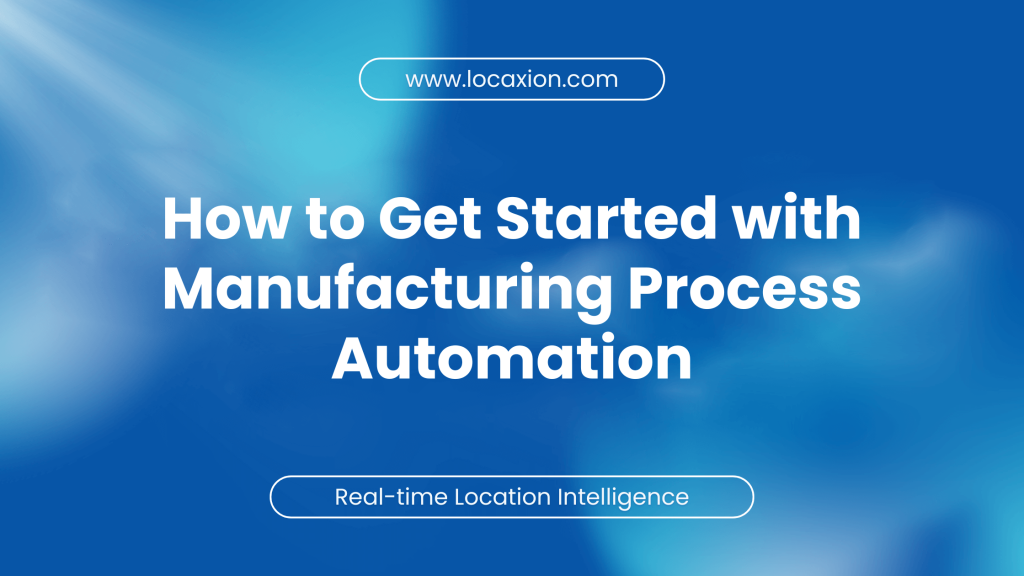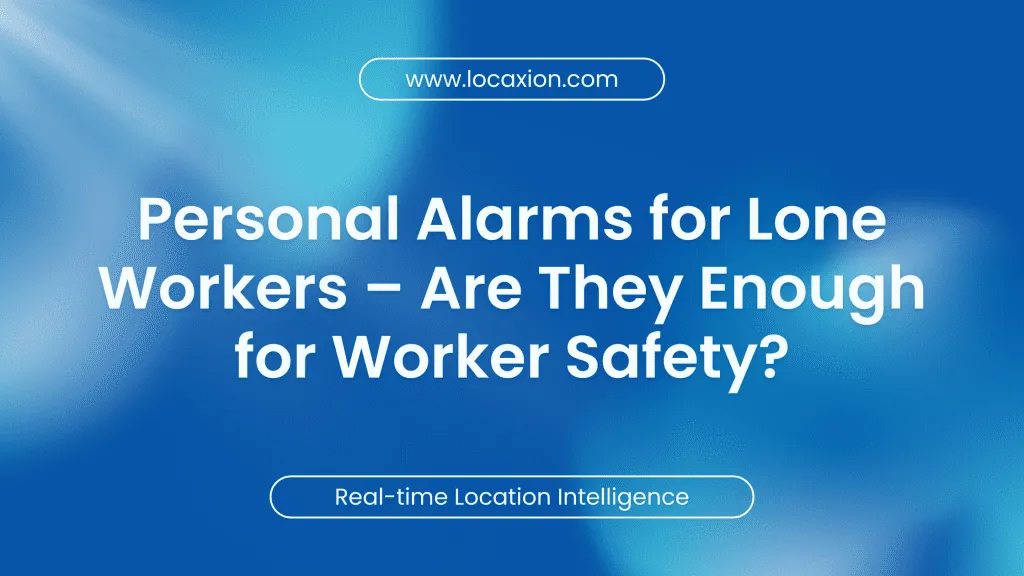Effective yard management is essential for any modern YMS supply chain. Real-Time Location Systems (RTLS) play a central role in minimizing delays and improving coordination across yard operations.
Using technologies such as Ultra-Wideband (UWB), RFID, Bluetooth Low Energy (BLE), and GPS, RTLS allows for continuous tracking of vehicles, equipment, and personnel throughout the yard and dock areas.
This guide breaks down how RTLS supports yard operations, outlines the core technologies behind it, and offers practical tips for applying these tools to improve site visibility and daily workflows.
RTLS and Yard Management Automation
RTLS plays a critical role in yard management automation by providing real-time visibility of trailers, trucks, forklifts, containers, and other assets within logistics hubs.
Replacing manual methods such as paper logs and barcode scans, RTLS reduces inefficiencies, minimizes asset misplacement, and lowers operating costs.
Key Capabilities of RTLS in Yard Management Automation:
- Real-Time Asset Tracking: Locate trailers, trucks, and equipment instantly to cut search time and optimize yard operations.
- Automated Dock Scheduling: Assign docks based on real-time status to reduce congestion and accelerate turnaround.
- System Integration: Sync RTLS with WMS and TMS platforms for end-to-end logistics coordination.
- Proactive Alerts & Notifications: Receive real-time notifications on arrivals, departures, idle assets, and delays to maintain operational flow.
- Enhanced Yard Security: Use geofencing and automation to restrict unauthorized movement and maintain regulatory compliance.
How RTLS Supports Logistics Yard Management
Integrating RTLS into logistics yard management delivers measurable gains in efficiency, visibility, and cost control across dock and yard operations.
Optimized Dock Utilization
- Automated Assignments: RTLS assigns trailers to available docks based on real-time status, reducing congestion and wait times.
- Lower Idle Times: Continuous monitoring of dock usage enables faster turnarounds and better resource allocation.
Improved Yard Visibility
- Real-Time Asset Tracking: Locate trailers, containers, and equipment instantly to eliminate search delays.
- Inventory Accuracy: Enhanced tracking reduces inventory errors and asset loss.
Faster Check-In/Out Processes
- Automated Gate Control: RTLS enables vehicle recognition at gates, speeding up access and exit without manual checks.
- Access Security: Only authorized vehicles are allowed through, improving site security.
Cost Reduction
- Efficient Resource Use: Optimized workflows cut fuel usage and labor costs.
- Lower Detention Fees: Accurate timing helps avoid delays in loading and unloading.
Enhanced Safety
- Collision Prevention: Real-time tracking helps avoid vehicle and equipment collisions.
- Geofencing Alerts: Automated notifications for unauthorized movement in restricted zones support compliance and safety protocols.
Implementing RTLS in the Yard Management Supply Chain
Introducing RTLS into the yard management supply chain requires careful planning, strategic alignment, and a clear understanding of operational challenges. The first step is a thorough assessment of your facility’s current performance. Identify recurring pain points such as frequent asset misplacement, long vehicle dwell times, or inefficient dock utilization.
These issues often indicate a lack of real-time visibility and poor coordination. Establish specific objectives for RTLS adoption, whether it’s to reduce operating costs, improve throughput, enhance safety, or enable more accurate asset tracking.
Choose the Right RTLS Technology Mix
Once the goals are defined, the next step is to select the right mix of technologies. RFID is well-suited for tracking trailers, containers, and pallets, offering reliable performance in high-volume environments. Ultra-Wideband (UWB) provides high-precision location data, making it ideal for tracking high-value or time-sensitive assets within tight yard zones.
GPS is most effective for monitoring vehicle movements outdoors, especially across large logistics parks. Many operations benefit from a hybrid solution, combining these technologies to cover both broad and detailed tracking needs, ensuring end-to-end visibility across all yard areas.
Deploy, Integrate, and Optimize
Integration with existing logistics platforms is essential. The RTLS solution must be compatible with your Warehouse Management System (WMS), Transportation Management System (TMS), and other enterprise software.
Real-time data synchronization allows all systems to work from a single source of truth, supporting more accurate scheduling, dispatching, and inventory decisions.
With the right technology in place, infrastructure deployment becomes the focus. Tracking devices such as tags and sensors should be installed on assets, vehicles, and access points throughout the yard.
A stable, scalable network is required to transmit location data reliably and securely. Wireless network coverage, power supply considerations, and data throughput must be planned in advance to prevent bottlenecks in communication.
Ongoing Monitoring and Operational Refinement
After deployment, the success of RTLS depends on ongoing monitoring and operational refinement. Analyzing collected data reveals patterns in asset movement, dock usage, and vehicle dwell times, helping operations teams make informed decisions.
These insights support continuous improvement, allowing for adjustments in yard layout, staffing, and scheduling based on actual performance data rather than assumptions.
RTLS is not a plug-and-play solution but a strategic tool that, when implemented thoughtfully, significantly strengthens the yard management supply chain. It creates the foundation for smarter logistics operations, reduced waste, and higher throughput in both routine and peak periods.
How to Choose the Best Dock & Yard Management Solution
Selecting the right Dock & Yard Management Solution (YMS) requires balancing your current operational challenges with future scalability. Use these guiding questions to make an informed decision:
1. What Are Your Primary Objectives?
- Are you looking to reduce truck dwell times, improve dock scheduling, or optimize yard space utilization?
- Clarifying these objectives helps you avoid unnecessary features that add complexity without real value.
2. Will You Need More Than Yard & Dock Optimization?
- Do you plan to extend tracking to yard trucks, forklifts, trailers, or containers?
- If yes, consider a Digital Twin platform that offers custom workflow configurations rather than a traditional YMS.
- Accuracy matters: Outdoor asset tracking may require RTK or LoRa, while indoor dock operations benefit from UWB or BLE-based RTLS.
3. What Are Your Facility’s Unique Challenges?
- Yard size, traffic flow, and external factors (e.g., extreme weather, obstructions) affect system performance.
- Technology choice matters: Use RTK or LoRa outdoors for seamless tracking, and avoid costly RFID gates if frequent tag replacements are required.
4. How Scalable Is the Solution?
- Does the system support growing trailer volumes, new facilities, and automation features like predictive dock scheduling and automated gate control?
- Ensure the RTLS solution can scale without major infrastructure overhauls.
5. How Well Does It Integrate with Your Existing Systems?
- Seamless integration with Fleet Management Systems (FMS), Transportation Management Systems (TMS), Warehouse Management Systems (WMS), ERP, and telematics platforms is critical for real-time visibility and automated workflows.
- Look for API compatibility and cloud-based solutions to future-proof your operations.
Find the Right RTLS Solution for Your Yard Operations
Integrating RTLS into dock and yard operations is a practical way to improve efficiency, reduce operational costs, and strengthen safety through real-time asset and vehicle visibility. By replacing manual processes with automated tracking, logistics teams can make faster, more accurate decisions and maintain tighter control over yard workflows.
Choosing the right RTLS technology depends on your facility’s size, asset types, and integration requirements. If you’re evaluating solutions, explore how a purpose-built dock and yard management system can support your RTLS strategy and deliver measurable performance gains across your yard management supply chain.




